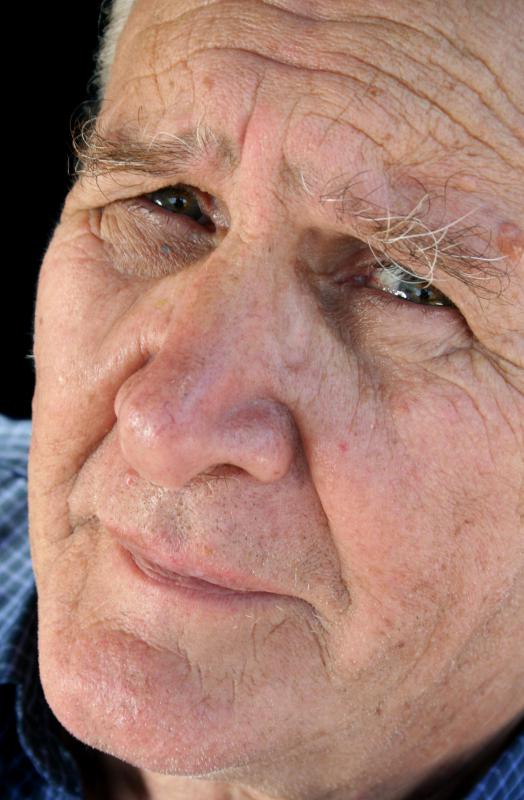At TheHealthBoard, we're committed to delivering accurate, trustworthy information. Our expert-authored content is rigorously fact-checked and sourced from credible authorities. Discover how we uphold the highest standards in providing you with reliable knowledge.
What is the Orbicularis Oculi?
The orbicularis oculi muscles encircle the eyes just beneath the skin of the upper and lower eyelids. Working as sphincters, these muscles work to close the eyelids. Based on the zone of action, the orbicularis oculi muscles consist of a palpebral portion that is located in the eyelid itself, an orbital portion that stretches from the upper eyelid crease to the brow, and a lacrimal portion that occupies the inner corner of the eye near the tear-drainage collection site known as the lacrimal sac. The palpebral part of the muscle mediates involuntary eye closure, such as blinking, while the orbital part of the orbicular oculi provides voluntary eyelid closure, such as a response to bright light. As the orbicularis oculi is the only muscle capable of closing the eyelid, disruption of the function of this muscle produces exposure of the eyeball, requiring lubricants and possibly, surgery.
When the eyelid closes, the lacrimal portion of the orbicularis oculi pulls the inside corners of the lid toward the nose and turns them inward slightly. This action positions tiny holes, called puncta, in the most favorable position to collect tears. The muscle also compresses the lacrimal sac, located near the nose. When the eye opens, the lacrimal sac expands due to a vacuum created by the compression, drawing tears from the eye into the sac. In this way, the orbicularis oculi muscle functions as part of a lacrimal or tear pump.

Located deep to the orbicularis oculi, the levator palpebrae superioris connects to the cartilage plate of the upper eyelid, lifting the lid and opening the eye. Its effect directly opposes the action of the orbicularis muscle. When the levator muscle is active, lifting the eyelid, the orbital portion of the orbicularis can still contract, furrowing the brows, while the palpebral part of the muscle relaxes. The lateral zone of the orbital orbicularis pulls the skin of the cheek and temple toward the eye, resulting in the formation of crow’s feet over time.

The orbicularis oculi muscle gets its nerve supply from the facial nerve on each side. Blepharospasm is a condition in which the eyelids twitch or blink involuntarily. In cases of blepharospasm, the orbicularis oculi muscles contract excessively. In such cases, ophthalmologists search for sources of irritation on the ocular surface, such as dryness, which can be managed with artificial tears. Alternatively, physicians treat benign essential blepharospasm, due to abnormal function of the basal ganglia located in the brain stem, with injections of botulinum toxin.

Damage to the facial nerve or temporary dysfunction of the nerve, called Bell’s Palsy, results in the inability to close the eye. Bell’s Palsy occurs in about two out of every 10,000 persons. Inflammation in the peripheral facial nerve has been linked to herpes, diabetes, sarcoidosis, and Lyme disease. About 70 percent of Bell’s Palsy cases resolves within a few weeks to months.
AS FEATURED ON:
AS FEATURED ON:














Discussion Comments
Isn't blinking kind of borderline voluntary, and closing one's eyes against bright likes less so?
Post your comments